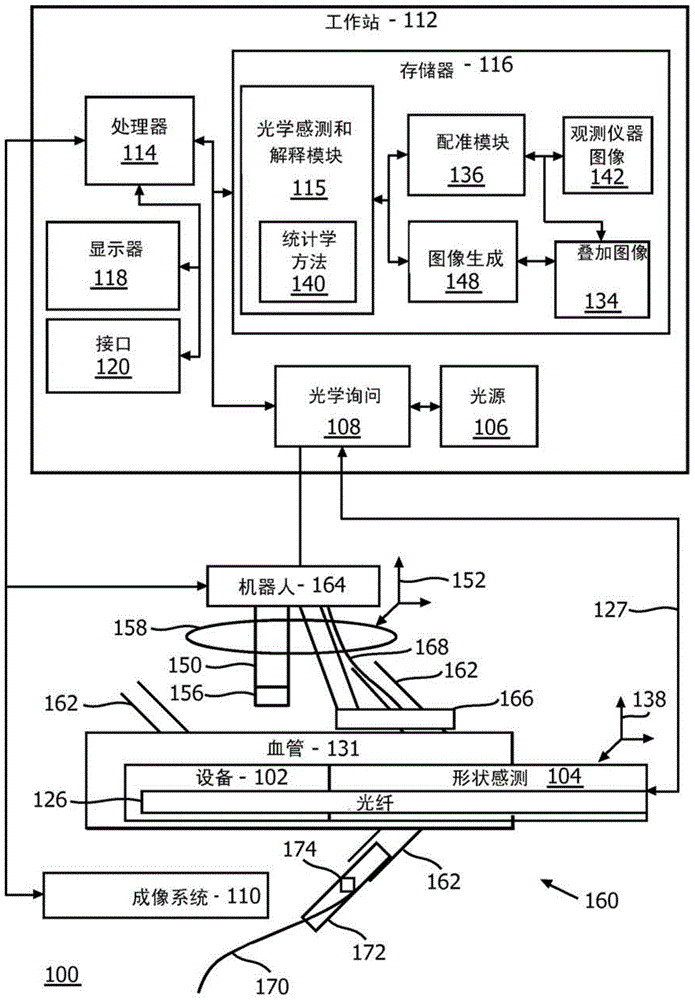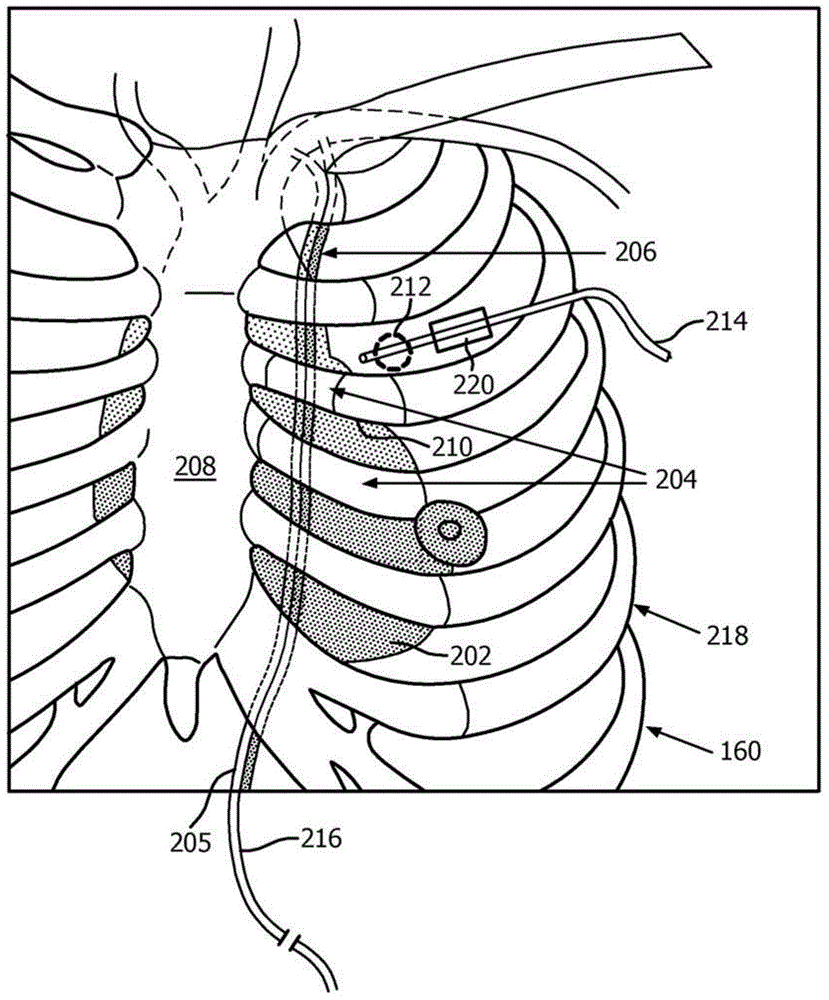Fiber optic sensor guided navigation for vascular visualization and monitoring
A technology of blood vessels and optical fibers, applied in the field of medical instruments, can solve problems such as unintentional cutting of branches, missed branches, blood leakage, etc.
- Summary
- Abstract
- Description
- Claims
- Application Information
AI Technical Summary
Problems solved by technology
Method used
Image
Examples
Embodiment Construction
[0015] In accordance with the principles of the present invention, systems and methods are provided that employ fiber optic shape sensing and localization (FOSSL) technology to improve and simplify coronary artery bypass graft (CABG) or other surgical procedures. FOSSL technology, or fiber optic shape sensing, makes optical fibers sensitive to strain and temperature. Surrogate variables such as flow, inflammation, tissue pressure / swelling, tissue contact, etc. can be measured indirectly (in the case of flow, using eg a temperature gradient of indicator dilution). When embedded in blood vessels, the optical fibers can provide the 3D shape and dynamics of the vasculature as well as flow information to help detect branches and bifurcations.
[0016] In one embodiment, this is performed using a shape-sensing fiber optic device inserted into the lumen of the vessel to be removed (eg, the left internal mammary artery (LIMA)). A three-dimensional (3D) reconstruction of the vessel's ...
PUM
 Login to View More
Login to View More Abstract
Description
Claims
Application Information
 Login to View More
Login to View More - R&D Engineer
- R&D Manager
- IP Professional
- Industry Leading Data Capabilities
- Powerful AI technology
- Patent DNA Extraction
Browse by: Latest US Patents, China's latest patents, Technical Efficacy Thesaurus, Application Domain, Technology Topic, Popular Technical Reports.
© 2024 PatSnap. All rights reserved.Legal|Privacy policy|Modern Slavery Act Transparency Statement|Sitemap|About US| Contact US: help@patsnap.com










